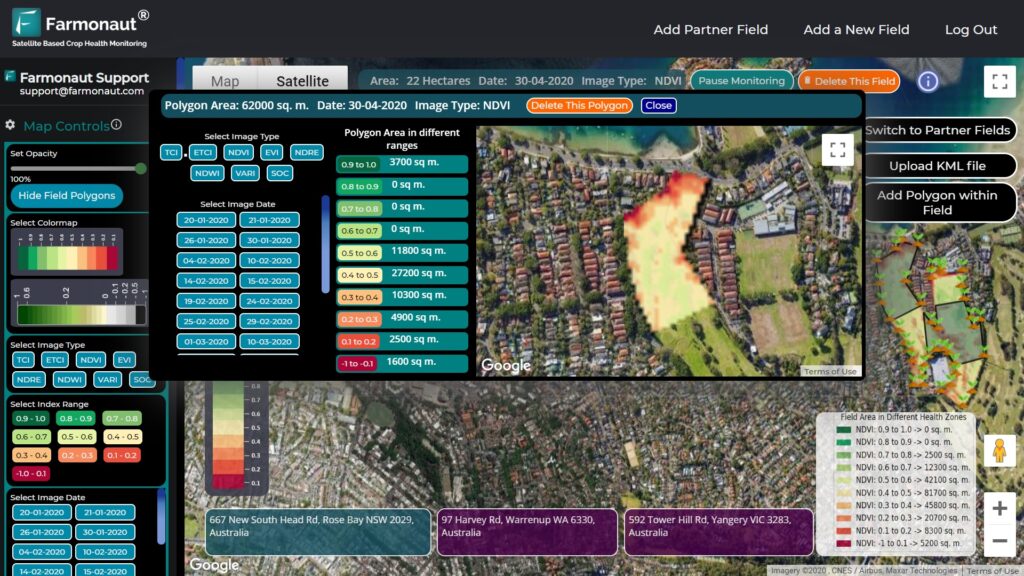EPA Reveals Alarming Dioxin Levels in Houston’s Fifth Ward: Community Health at Risk
“EPA testing in Houston’s Fifth Ward revealed dioxin levels exceeding safety thresholds at a community center frequented by children and seniors.”
In a startling revelation that has sent shockwaves through the Houston community, recent Environmental Protection Agency (EPA) testing in the Fifth Ward has uncovered alarming levels of dioxin contamination. This discovery has raised significant environmental health concerns, particularly for the residents of this historically underserved neighborhood. As we delve into this critical issue, we’ll explore the implications, the ongoing investigations, and the potential impact on community health.
Understanding the Dioxin Crisis in Houston’s Fifth Ward
The Fifth Ward, a vibrant community in Houston, Texas, has long been a hub of cultural significance and resilience. However, recent events have cast a shadow over this neighborhood, as the EPA’s findings have brought to light a pressing environmental crisis. The discovery of elevated dioxin levels, particularly around the Julia C. Hester Community Center, has raised red flags about the potential health risks faced by local residents.
Dioxins are a group of highly toxic chemical compounds that can cause severe health problems, including cancer, reproductive issues, and developmental disorders. The presence of these chemicals in urban soil is a serious concern, especially in areas frequented by vulnerable populations such as children and seniors.

The Julia C. Hester Community Center: A Focus of Concern
At the heart of this environmental health crisis is the Julia C. Hester Community Center, a vital resource for the Fifth Ward. This center serves as a cornerstone for community activities, hosting afterschool programs for children and providing essential services for seniors. The discovery of toxic chemical levels exceeding EPA screening thresholds at this location has sent ripples of concern throughout the neighborhood and beyond.
The EPA’s findings indicate that dioxin levels around the Hester House are significantly above the agency’s minimum screening levels. In some areas, concentrations were found to be up to five times the acceptable limit. This revelation has prompted immediate action from environmental authorities and local officials.
The Fifth Ward’s History as a Cancer Cluster
The discovery of high dioxin levels adds another layer to the Fifth Ward’s complicated history with environmental contamination. The Kashmere Gardens area, in particular, has previously been identified as a cancer cluster. This designation suggests a higher-than-expected occurrence of cancer cases within a specific geographic area and time period.
Historical industrial activities, including operations at an old rail yard run by Southern Pacific until the 1980s, have long been suspected as potential contributors to the area’s environmental woes. The use of creosote, a wood preservative with known carcinogenic properties, at this site has been a point of concern for residents and health officials alike.
EPA’s Ongoing Investigation and Sampling Efforts
In response to these alarming findings, the EPA has launched an extensive investigation to assess the full extent of contamination in the Fifth Ward. This effort includes comprehensive soil and vapor sampling across the affected areas. The agency’s primary goal is to determine the scope of the dioxin problem and develop appropriate strategies to address it.
Last year, under EPA supervision, Union Pacific conducted initial sampling of soil and water vapor. These tests were aimed at evaluating contamination linked to the former Houston Wood Preserving Works site. The results of this sampling effort led to the discovery of elevated dioxin levels, prompting the need for further investigation.
Understanding Dioxin Levels and EPA Screening Thresholds
To better understand the severity of the situation, it’s crucial to examine the specific dioxin levels found and how they compare to EPA standards. The testing results revealed dioxin concentrations at the Hester House of 220 parts per trillion (ppt) and 54 ppt. Both of these readings surpass the EPA’s residential screening threshold of 48 ppt.
These numbers might seem small, but in the context of dioxin contamination, they are significant. Dioxins are potent toxins that can cause harm even at very low concentrations, especially with prolonged exposure. The EPA’s screening levels are set conservatively to protect public health, taking into account various factors including potential long-term effects.
| Location | Measured Dioxin Level (ppt) | EPA Screening Threshold (ppt) | Exceedance Factor | Potential Health Risks |
|---|---|---|---|---|
| Julia C. Hester Community Center (Site A) | 220 | 48 | 4.58 | Increased cancer risk, reproductive issues |
| Julia C. Hester Community Center (Site B) | 54 | 48 | 1.13 | Moderate increase in long-term health risks |
| Residential Area (Average) | 65 | 48 | 1.35 | Potential for developmental issues, immune system effects |
| Former Rail Yard Site | 180 | 48 | 3.75 | High risk of cancer, endocrine disruption |
| Public Park | 40 | 48 | 0.83 | Low immediate risk, potential for cumulative effects |
Immediate Health Risks and Long-Term Concerns
While the EPA has stated that the current dioxin levels do not pose an immediate danger to health, the long-term implications of exposure remain a significant concern. Dioxins are known to accumulate in the body over time, potentially leading to various health issues. The agency emphasizes that prolonged exposure to these chemicals can be harmful, underscoring the need for swift action and ongoing monitoring.
Harris County Attorney Christian Menefee has echoed these sentiments, urging residents not to panic but to remain vigilant and informed. The situation is particularly concerning given that many families and vulnerable seniors regularly use the spaces where elevated dioxin levels have been detected.
Community Response and Call to Action
The revelation of dioxin contamination has galvanized the Fifth Ward community into action. Residents, community leaders, and local officials are calling for transparency, comprehensive testing, and immediate remediation efforts. The situation has highlighted the broader issue of environmental justice, as many industrial areas disproportionately affect low-income communities and communities of color.
Community organizations are working to educate residents about the potential risks and advocating for resources to address the contamination. There’s a growing demand for regular health screenings, environmental monitoring, and long-term studies to track the impact of dioxin exposure on the community’s health.

The Role of Union Pacific and Corporate Responsibility
Union Pacific, as the successor to Southern Pacific, has been actively involved in the testing process under EPA supervision. The company has acknowledged its role in this extensive testing endeavor, stating that nearly all detected chemicals around schools and public properties were below the EPA’s conservative screening levels.
However, Union Pacific has also cautioned against prematurely identifying a specific source of contamination, emphasizing the need for a complete testing and evaluation process. This stance highlights the complex nature of environmental contamination in urban areas, where multiple historical and current sources may contribute to the problem.
Broader Implications for Urban Environmental Health
The situation in Houston’s Fifth Ward is not an isolated incident but rather a reflection of a broader issue facing many urban areas across the United States. Industrial legacy pollutants, like dioxins, pose significant challenges to public health, especially in neighborhoods that have historically been subjected to environmental injustices.
This case underscores the critical need for:
- Comprehensive environmental monitoring in urban areas
- Stringent regulations on industrial activities in residential zones
- Proactive measures to address legacy contamination
- Increased funding for environmental remediation projects
- Enhanced community engagement in environmental decision-making processes
The Path Forward: Addressing Dioxin Contamination
As the EPA continues its investigation, several key steps are being taken to address the dioxin contamination in Houston’s Fifth Ward:
- Extensive Sampling: The EPA is conducting additional sampling to map out the full extent of contamination across the neighborhood.
- Risk Assessment: A comprehensive evaluation of health risks associated with the detected dioxin levels is underway.
- Community Outreach: Regular updates and educational resources are being provided to residents to keep them informed about the situation and precautionary measures.
- Remediation Planning: Based on the sampling results, the EPA will develop a plan for cleaning up contaminated areas.
- Long-term Monitoring: Ongoing monitoring will be implemented to track dioxin levels and ensure the effectiveness of remediation efforts.
“Houston’s Fifth Ward, known as a cancer cluster, faces renewed health concerns as EPA conducts extensive soil and vapor sampling for toxic chemicals.”
The Importance of Environmental Justice
The dioxin contamination in Houston’s Fifth Ward brings to the forefront the critical issue of environmental justice. This concept emphasizes the fair treatment and meaningful involvement of all people, regardless of race, color, national origin, or income, with respect to the development, implementation, and enforcement of environmental laws, regulations, and policies.
In many cases, low-income communities and communities of color bear a disproportionate burden of environmental hazards. The situation in the Fifth Ward exemplifies this disparity, highlighting the need for:
- Equitable distribution of environmental risks and benefits
- Inclusive decision-making processes in environmental policy
- Targeted investments in environmental remediation for affected communities
- Strengthened enforcement of environmental regulations in vulnerable areas
Addressing these issues is not just a matter of environmental policy but a fundamental aspect of social justice and public health.
Technological Solutions for Environmental Monitoring
In the face of such environmental challenges, innovative technologies play a crucial role in monitoring and addressing contamination. Advanced remote sensing and data analysis tools can provide valuable insights into environmental conditions, helping to identify and track pollutants more effectively.
For instance, satellite-based monitoring systems, like those developed by Farmonaut, offer powerful capabilities for large-scale environmental assessment. While primarily focused on agricultural applications, such technologies demonstrate the potential for advanced monitoring solutions in urban environments as well.
These technological advancements can complement traditional soil and water testing methods, providing a more comprehensive picture of environmental health. By leveraging such tools, communities and environmental agencies can:
- Conduct more frequent and widespread monitoring
- Detect environmental changes and potential contamination earlier
- Track the effectiveness of remediation efforts over time
- Provide transparent, real-time data to inform community members and policymakers
Community Engagement and Education
A crucial aspect of addressing the dioxin contamination in Houston’s Fifth Ward is ensuring that community members are well-informed and actively engaged in the process. This involves:
- Regular community meetings to share updates on the investigation and remediation efforts
- Educational programs on dioxin contamination, its health effects, and preventive measures
- Establishment of a community advisory board to represent residents’ interests
- Creation of accessible resources for residents to stay informed about environmental safety
By fostering open communication and collaboration between environmental agencies, local authorities, and community members, we can ensure that the concerns and needs of the Fifth Ward residents are adequately addressed.
Policy Implications and Future Prevention
The dioxin contamination in Houston’s Fifth Ward serves as a wake-up call for policymakers at local, state, and federal levels. This incident highlights the need for:
- Stricter regulations on industrial activities near residential areas
- Enhanced monitoring and enforcement of environmental standards
- Increased funding for urban environmental remediation projects
- Development of comprehensive urban soil management strategies
- Integration of environmental justice principles into urban planning and development
By implementing stronger preventive measures and more robust environmental policies, we can work towards preventing similar situations in other communities across the country.
The Role of Technology in Environmental Protection
As we confront environmental challenges like dioxin contamination, the role of technology in environmental protection becomes increasingly important. Advanced tools and platforms can significantly enhance our ability to monitor, analyze, and respond to environmental threats.
For example, Farmonaut’s satellite-based monitoring technology, while primarily designed for agricultural applications, demonstrates the potential for widespread environmental monitoring. Such technologies could be adapted to:
- Provide real-time data on soil and air quality in urban areas
- Detect early signs of contamination or environmental degradation
- Support more efficient and targeted remediation efforts
- Enhance public awareness and engagement through accessible data visualization
By leveraging these technological advancements, we can create more effective strategies for environmental protection and community health.
Conclusion: A Call for Collective Action
The discovery of alarming dioxin levels in Houston’s Fifth Ward is more than just a local environmental crisis; it’s a stark reminder of the ongoing challenges we face in ensuring environmental health and justice in our communities. As we move forward, it’s crucial that we approach this issue with the urgency and seriousness it demands.
Key takeaways from this situation include:
- The critical importance of regular environmental monitoring in urban areas
- The need for swift and transparent action when contamination is detected
- The value of community engagement and education in addressing environmental health issues
- The potential of technology to enhance our environmental protection efforts
- The ongoing struggle for environmental justice in marginalized communities
As we continue to monitor the situation in Houston’s Fifth Ward, let this serve as a catalyst for broader discussions and actions on urban environmental health across the nation. By working together – communities, policymakers, scientists, and technology innovators – we can strive for a future where all neighborhoods are safe from environmental hazards and where the principles of environmental justice are fully realized.
FAQ Section
- What are dioxins and why are they dangerous?
Dioxins are a group of highly toxic chemical compounds that can cause severe health problems, including cancer, reproductive issues, and developmental disorders. They are persistent environmental pollutants that accumulate in the food chain and human body over time. - How do dioxins enter the environment?
Dioxins can enter the environment through industrial processes, waste incineration, and historical use of certain pesticides. In urban areas, they often result from past industrial activities or contaminated sites. - What are the health risks associated with dioxin exposure?
Long-term exposure to dioxins can lead to various health issues, including cancer, reproductive and developmental problems, damage to the immune system, and hormone disruption. The severity of effects depends on the level and duration of exposure. - How can residents protect themselves from dioxin exposure?
Residents can minimize exposure by avoiding direct contact with contaminated soil, washing hands frequently, and following any guidelines provided by health authorities. It’s also important to stay informed about local environmental conditions and participate in community health initiatives. - What steps are being taken to address the dioxin contamination in Houston’s Fifth Ward?
The EPA is conducting extensive soil and vapor sampling, assessing the full extent of contamination, and developing plans for remediation. Local authorities are working on community outreach and education programs to keep residents informed and safe.
Earn With Farmonaut: Affiliate Program
Earn 20% recurring commission with Farmonaut’s affiliate program by sharing your promo code and helping farmers save 10%. Onboard 10 Elite farmers monthly to earn a minimum of $148,000 annually—start now and grow your income!











